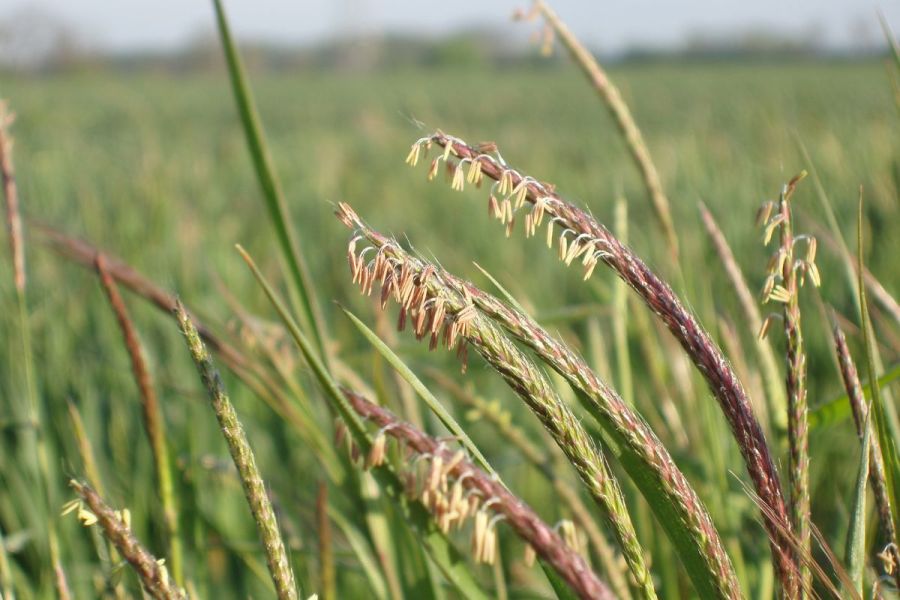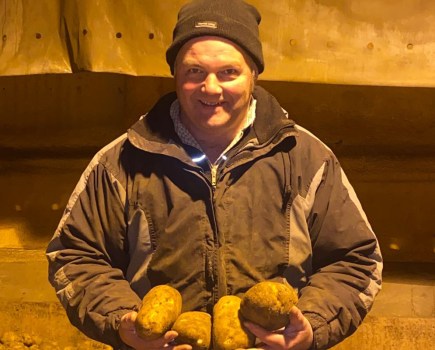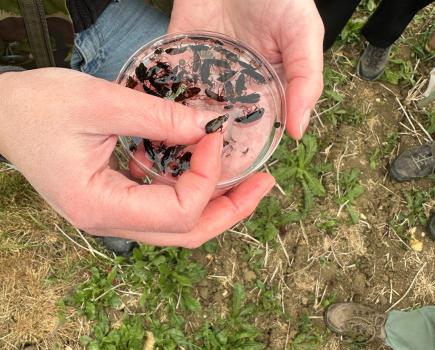By Martin Lines
The legacy of last year’s dry weather has announced itself in this year’s harvest. Travelling around the farm over the past month or two, I’ve observed the dreaded blackgrass rearing its unwelcomed head in many fields.
It certainly seems a good year for it, and areas that were clean for many years are again seeing the return of a blackgrass population. The arid weather last autumn offered a minimal opportunity for stale seed beds. In a typical year, our blackgrass doesn’t germinate until around the 15 October and we try to hold off drilling on any risky fields until after this date.
Last autumn, many farmers chose not to wait for fear of the weather. It’s always challenging to predict the weather, and it’s easy to get caught out if you have a large autumn workload. Unfortunately, many of us see this in the yield penalties that even moderate levels of blackgrass bring to our autumn cereals.
Some farms turn to multiple herbicides to control it but seeing the price of wheat back down to normal levels, this can be a dicey strategy. In the past, some of our fields have built resistance to chemical products, and I remain hesitant to rely on the next bottled solution pitched on the market as a silver bullet for blackgrass woes. The only real way to keep up with many of our weeds is a genuinely robust integrated pest management plan focusing on wider rotations, later drilling dates, and spring cropping.
How many will turn to the use of the plough to try and bury the problem? Many farms regularly plough, but the blackgrass seed bank is mixed throughout the plough profile, and the grassweed problem increases. But if we repeat an action time after time, year after year, nature will find a way around it. Nature always has the upper hand.
You often hear loudly at events and conferences from those who believe the plough is the tool of the devil and should never be used again. But ‘the how, not the plough’ is the problem. If you follow regenerative principles for minimising soil disturbance as much as possible, this still doesn’t rule out the plough when deemed absolutely necessary. I take a pragmatic view, if we identify a problem in our system and we have a tool that we occasionally use to rectify the problem and improve our system, it should and can be used.
If we have very high levels of seed return and can’t leave the seed on the surface to germinate and die, burying it once can work. Then start from a clean slate and don’t repeat the same actions or end up in the same place with a large population of weeds – more the exception, less the rule.
Another impact from the last year’s dry weather and this year’s topsy-turvy spring seems to be a lack of insects. Many are commenting about how few pollinators are in their beans this year. Many keen wildlife people have noticed how little insects and grubs are available for spring chicks. As our weather becomes less predictable and more changeable, it’s increasingly important to consider how we can provide a range of habitats across our farmed landscapes. Having a diversity of farm habitats offers the necessary life-cycle needs for pollinators and predatory insects, which helps boost our future yields.
With the additional SFI options available this year, we can all find areas where we can get funding to deliver a range of nature-friendly outputs. Hopefully, most will take up as many options as possible. When I’m talking to Defra and the Treasury members, they’re pretty clear farmers should be engaged with these schemes and funding opportunities to ensure the long-term security of the agricultural budget. If we don’t use the funds available, the Treasury will have a case for negotiating a reduction in the money available to Defra. As public money, the sector needs to demonstrate not only appetite but the value we can deliver for food, nature and climate. We either use it – or lose it.
This article was taken from the latest issue of CPM. For more articles like this, subscribe here.
Sign up for Crop Production Magazine’s FREE e-newsletter here.




